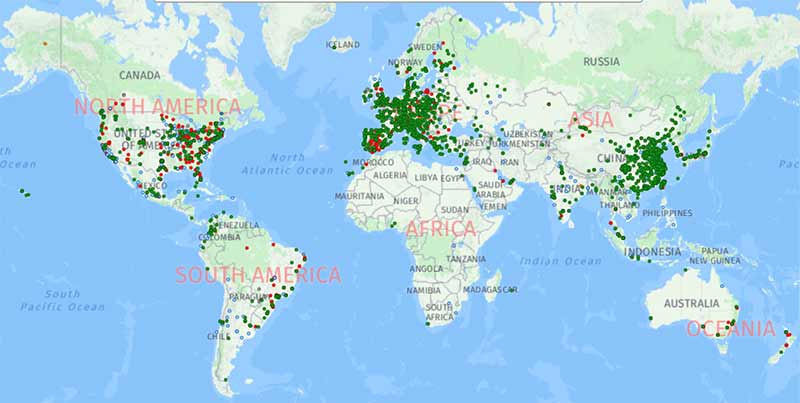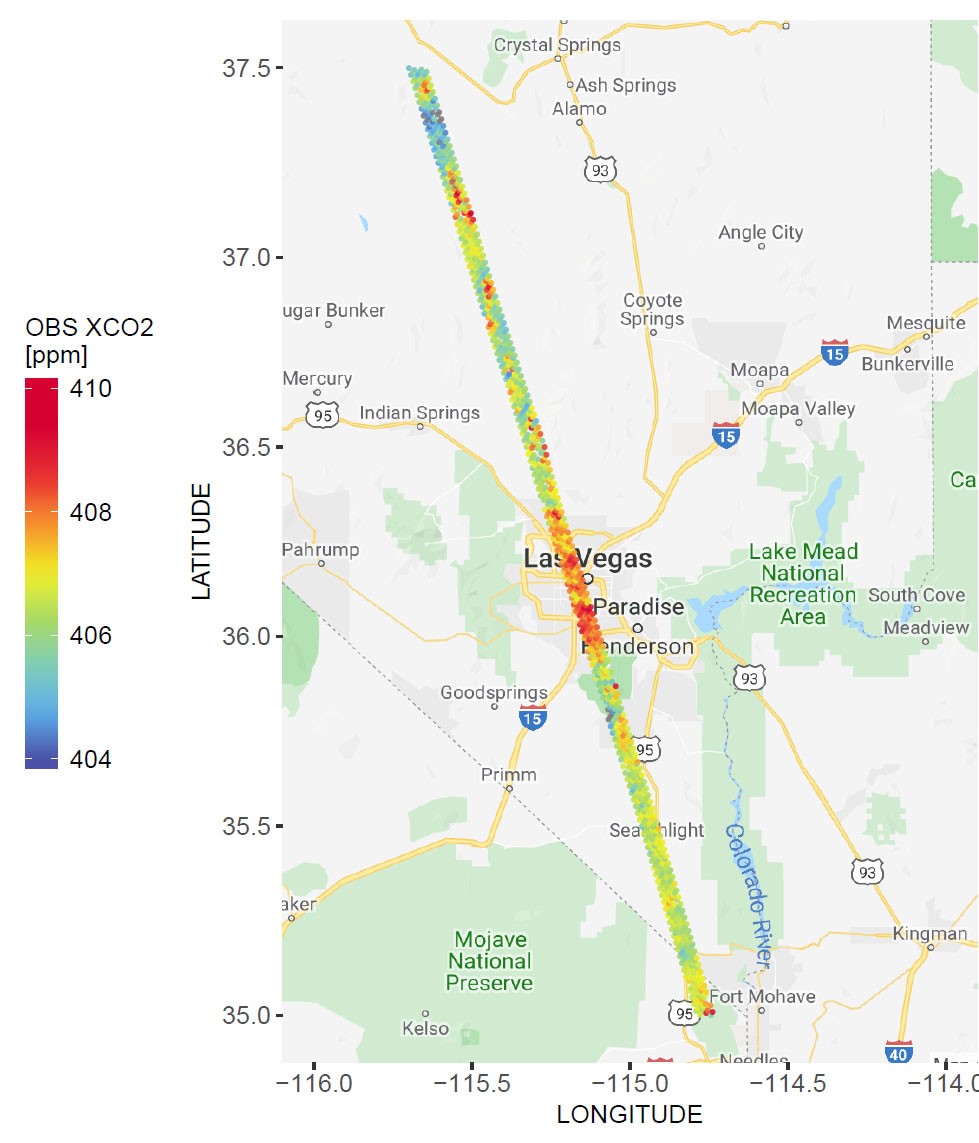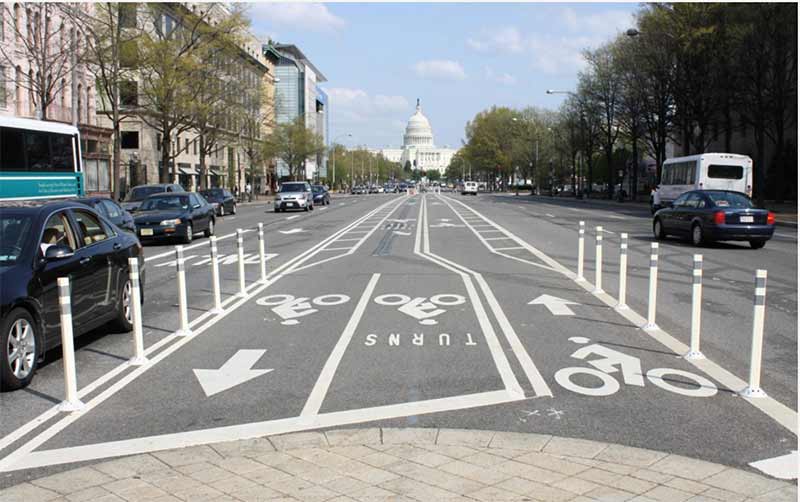One Health Newsletter
Shared-Biking Programs and Improving Plant Health, Animals, and Humans
Author
Patrick Tajanlangit
Milken Institute School of Public Health
George Washington University
Washington, D.C., USA
As particle air pollution returns to the Earth’s surface, it can contaminate soil and water bodies, which can harm crops, surrounding vegetation and decrease the biodiversity of many ecosystems. Globally, the effects of climate change have predicted an increase of poor air quality in urban settings worldwide. Innovative programs that benefit human and ecosystem health, such as bike-sharing programs, can help combat these global issues.
Bicycling can improve cardiovascular health by exercising cardiac frequency, burning calories, and pumping blood around the body. Urban bike-sharing programs are green-friendly, lower carbon gas emission levels, reduce energy consumption, promote economic growth, and decrease traffic pollution.1 Due to the promotion of healthier air quality for humans, animals, and plants that bike-sharing programs enhance, the One Health concept serves as a profound pillar through the implementation of these programs. Since car transportation contributes to greenhouse gas emissions (e.g., carbon dioxide, nitrous oxide, methane), bike-sharing programs in urban communities have the potential to offer a compromise between efficient transportation and healthier air quality (Figure 1).
The One Health concept and the need to take collective action will address the challenge of air pollution at local, national, and international levels. The One Health approach requires collective action from public health officials, scientists, marketers, and government officials to efficiently promote a new method of transportation. However, two specific challenges remain. First, human-induced emissions of greenhouse gases drive climate change, resulting in irregular shifts in weather patterns seen in satellite data. If cars continue to bolster emission rates, the effects of climate change will be irreversible, making the planet less inhabitable. Second, according to the US Environmental Protection Agency, transportation contributed to 29% of greenhouse gas emissions from 2018, which urges health officials to seek alternative modes of transportation.2
Figure 1: A map of bikeshare services across the globe (Source: “The Meddin Bike-sharing World Map.” Russell Meddin, Paul DeMaio, Oliver O’Brien, Renata Rabello, Chumin Yu, Jess Seamon, Thiago Benicchio, Deng Han (ITDP) and Jacob Mason (ITDP). Accessed July 3, 2021. http://bikesharingworldmap.com/)
Complications with Rising Carbon Dioxide Emissions
Each year, scientific findings have reported that the planet is changing, as ice sheets melt, oceans warm, and sea levels rise. These changes, which influence human and animal health, are connected to humans’ carbon footprint. Poor air quality has been linked to urban communities, where one study concluded that 35.67% of urban residents perceived more air pollution in their daily life, which is 18.91% higher than rural residents.3 Plants are also affected by poor air quality, as atmospheric pollutants can have indirect links to changes in soil pH and can have direct toxic effects.4 Moreover, as cultivated and wild plants are an enormous food resource for humans, domestic, and wild animals, exposure to these pollutants can strongly affect the photosynthetic process.4
Evidence of Car’s Expediting the Detrimental Impacts on Air Quality
A typical passenger vehicle emits approximately 4.6 metric tons of carbon dioxide per year.2 Becoming more physically active in public transportation may have indirect and direct impacts on human and animal health, such as air quality, soil richness, diet, stress, physical and mental health. Individual transportation is a large contributor to greenhouse gas emissions, which can significantly decrease soil moisture requiring more irrigation, while air pollution (emission particles) has multiple impacts on health; humans have the ability to decide between a more physically active form of transportation or public transportation to diminish these consequences.5 Animal and ecosystem relationships suffer from a rise in greenhouse gas emissions where the distribution and the biodiversity of animals is decreasing. Moreover, animals are migrating toward the geographical poles as a reaction toward the rise in global temperatures,6 which can significantly impact food chains and relationship dynamics of different species (e.g., climate dependent disease transmission).
Substantial data from the World Health Organization, the US Environmental Protection Agency, and numerous research articles demonstrate the detrimental effects of car transportation. This highlights the need for global communities to act as a whole and find new innovative ways to dwindle these outcomes. In fact, global studies using satellite data have reported shelter-in-place orders and reduced car transportation has reduced the prevalence of greenhouse gases (Figure 2). One study conducted by the Global Carbon Project reported a 17% decrease in carbon dioxide emissions tied to global shelter-in-place orders associated with COVID-19.7 Though COVID-19 has put a halt on life and hurt many businesses, the Earth’s air quality has significantly improved.8 Seeking alternative approaches to reduce carbon dioxide emissions, like bike-sharing programs, can improve air quality for humans, plants, and animals.
Figure 2: NASA image of the amount of carbon dioxide presence in Las Vegas, Nevada (Greicius T. NASA Satellite Offers Urban Carbon Dioxide Insights. NASA. https://www.nasa.gov/feature/jpl/nasa-satellite-offers-urban-carbon-dioxide-insights. Published March 6, 2020. Accessed July 7, 2021.)
The Benefits of Bike-sharing Programs
City officials can prevent risk factors of non-communicable diseases through the implementation of bike-sharing programs. Shared-bike programs and biking lanes decrease the amount of greenhouse gases released into the air. Reducing air pollution particles has been shown to reduce the risk of cardiovascular disease, cancer, lung diseases, and stroke.3
Bike-sharing programs have a role on the air quality humans, plants, and animals breathe. Bikes and public transportation serve as a more viable option to travel because they reduce the amount of greenhouse gas emissions that typically come from cars. Also, congestion and pollution have been associated with cars and their exhaust pipes. By decreasing the number of cars through bike-sharing programs, cities will experience a decrease in air pollution that will benefit humans, animals, and plants (Figure 3). The soil where these species live will have greater moisture, allowing for plants to grow more freely. Coupled with these benefits, bike-sharing can have a significant economic impact, by saving on the consumption of expensive fossil fuels while providing access to several people for optimal use, on time and space, of a single vehicle.
Policy and Data on Current Efforts
Bike-sharing data from six US cities that use Lyft partners were analyzed and depicted those typical destinations have changed in response to local policy.8 Also, US cities are enacting new policies that offer free Lyft passes to essential workers, as well as adding or expanding docking stations near large corporations.8 On April 30, 2020, Citi Bike, a bike sharing system, extended its initial program that offered first responders and healthcare workers a 30-day free membership. This extension issued workforce memberships for a full year.8 The updated system was able to issue over 20,000 memberships through the program, and essential workers took more than 146,000 rides between April and May, 2020.8
Figure 3: Bike lanes in Washington, DC. (Source: Elvert Barnes)
Outlook on the Future for Bike-sharing Programs
With the increase in usage of bike rides, this new movement shows the wider accessibility and adaptability of bike-sharing program as well as the holistic view of how a One Health approach can be universally applied for societal benefit. The interdisciplinary approach of One Health allows large corporations, such as Lyft, to act as leaders helping to cultivate a healthy environment. Having a multitude of professions in control of these decisions will give us a larger array of opinions and expertise of their fields. The application of One Health will allow for prospective changes in which humans, animals, and plants will benefit. The implementation of these programs will enrich air quality, which would then benefit the ecosystems that breathe this air. Because of this approach, travelers acknowledge the wider view of how bike-sharing systems impact multiple populations, and ultimately, biodiversity. Bike-sharing programs may act as the pioneer for alternative travelling, paving the way for other innovative programs to follow in the future. Moving forward, cities around the globe must enact these environmentally-friendly programs to mitigate risks related to climate change.
To ensure environmental and economic changes and promote physical activity, public health officials should prioritize the goal of sustaining overall health for humans, animals, and the shared environment. They must consider greener ways of transportation that concurrently benefit physical and mental health of humans, as well as the general health of animals and plants. One long-term goal can be to create more bike lanes to lower urban congestion and decrease exhaust emissions. This goal may be achieved through collaborative efforts made from marketers and government officials. For example, actions made by government officials would be the most rational and efficient way to implement more bike lanes due to their expertise in city infrastructure as well as funding efforts. Although government officials may be able to create these lanes, an endeavor from public health officials and advertising companies will be able to promote and advocate the use of bikes. Currently, cities across the world are taking this initiative by making permanent changes to their streets by decreasing the size to securely allow more space for bikes, e-scooters, and pedestrians.
References
- Qiu L-Y, He L-Y. Bike sharing and the economy, the environment, and health-related externalities. Sustainability. 2018;10(4):1145.
- Environmental Protection Agency. Green Vehicle Guide. https://www.epa.gov/greenvehicles. Updated June 14, 2021. Accessed June 28, 2021.
- Yang T. Association between perceived environmental pollution and health among urban and rural residents-a Chinese national study. BMC Public Health. 2020;20(194):1-10.
- Florentina I, Ion B. The effects of air pollutants on vegetation and the role of vegetation in reducing atmospheric pollution. The Impact of Air Pollution on Health, Economy, Environment and Agricultural Sources. IntechOpen; 2011.
- European Environment Agency. Soil, land and climate change. https://www.eea.europa.eu/signals/signals-2019-content-list/articles/soil-land-and-climate-change. Updated May 11, 2021. Accessed June 27, 2021.
- Climate and Weather. Climate Change - effects on animals, birdlife and plants. https://www.climateandweather.net/global-warming/climate-change-and-animals/. 2020. Accessed June 27, 2021.
- Stanford Woods Institute for the Environment. Quarantine, climate and carbon emissions. https://woods.stanford.edu/news/quarantine-climate-and-carbon-emissions. Published September 20, 2020. Accessed May 28, 2021.
- Kanik A. The decisions cities made about coronavirus had a big impact on bike-share ridership. City Monitor. https://citymonitor.ai/transport/the-decisions-cities-made-about-coronavirus-had-a-big-impact-on-bike-share-ridership. Published July 21, 2020. Accessed May 6, 2021.
Next story: COVID-19 Brings Black Fungus to the Lime Light in India
One Health Newsletter
The One Health Newsletter is a collaborative effort by a diverse group of scientists and health professionals committed to promoting One Health. This newsletter was created to lend support to the One Health Initiative and is dedicated to enhancing the integration of animal, human, and environmental health for the benefit of all by demonstrating One Health in practice.
To submit comments or future article suggestions, please contact any of the editorial board members.


